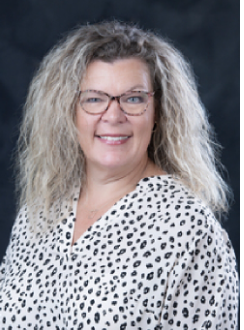Dixie Cartwright
Funded by NOAA’s Regional Geospatial Modeling Grant (RGMG), the Geospatial Education and Outreach (GEO) Project led by Assistant Extension Professor, John Cartwright is hosted through MSU’s Geosystems Research Institute to provide training in Geographic Information Systems (GIS). These tools help communities assess vulnerabilities, manage natural resources, and prepare for natural disasters such as hurricanes and sea level rise. The GEO Project was an extension effort of GRI that started following hurricane Katrina in 2006.
Dixie Cartwright, Training & External Facilitator with GRI, is dedicated to ensuring that project training initiatives reach the communities that need it most. “Through this project (GEO Project), we collaborate with a wide network of local, state, and federal agencies, along with external partners, which provides funding, support, and guidance,” Cartwright said.
Originally built around in-person workshops across Mississippi, the GEO Project adapted during the COVID-19 pandemic by moving many trainings online. This pivot opened the door to expanded reach across the northern Gulf region and beyond.
In recent years, Dixie Cartwright has led efforts to broaden the program’s national impact by working with federal partners. Through conversations with NOAA, Cartwright developed partnerships with the Bureau of Indian Affairs (BIA), tailoring GIS training to tribal communities across the United States. She also collaborated with the U.S. Department of Agriculture and the Food and Agriculture Organization of the United Nations to expand data training opportunities to a global stage.
“What inspires me is the belief that geospatial tools can empower communities—especially tribal populations—to manage natural resources, respond to environmental challenges, and strengthen resilience,” Cartwright said. “These trainings help bridge Indigenous knowledge with modern science and give participants new ways to communicate their priorities with policymakers and scientists.”
Through these trainings, participants learn how to use GIS to assess environmental risks, map infrastructure, and visualize data to support disaster response and long-term sustainability. Cartwright said one of the most meaningful results has been seeing participants gain confidence in using spatial tools to advocate for their lands and futures.
Looking ahead, the GEO Project team is focused on strengthening collaborations with local, state, tribal, and federal partners while exploring new technologies, such as interactive maps and 3D visualizations that make geospatial science more accessible. “Our ultimate goal is to help communities understand their vulnerabilities and build resilience,” Cartwright said. “By expanding access to GIS training, we’re supporting informed decision-making and long-term environmental stewardship.”

